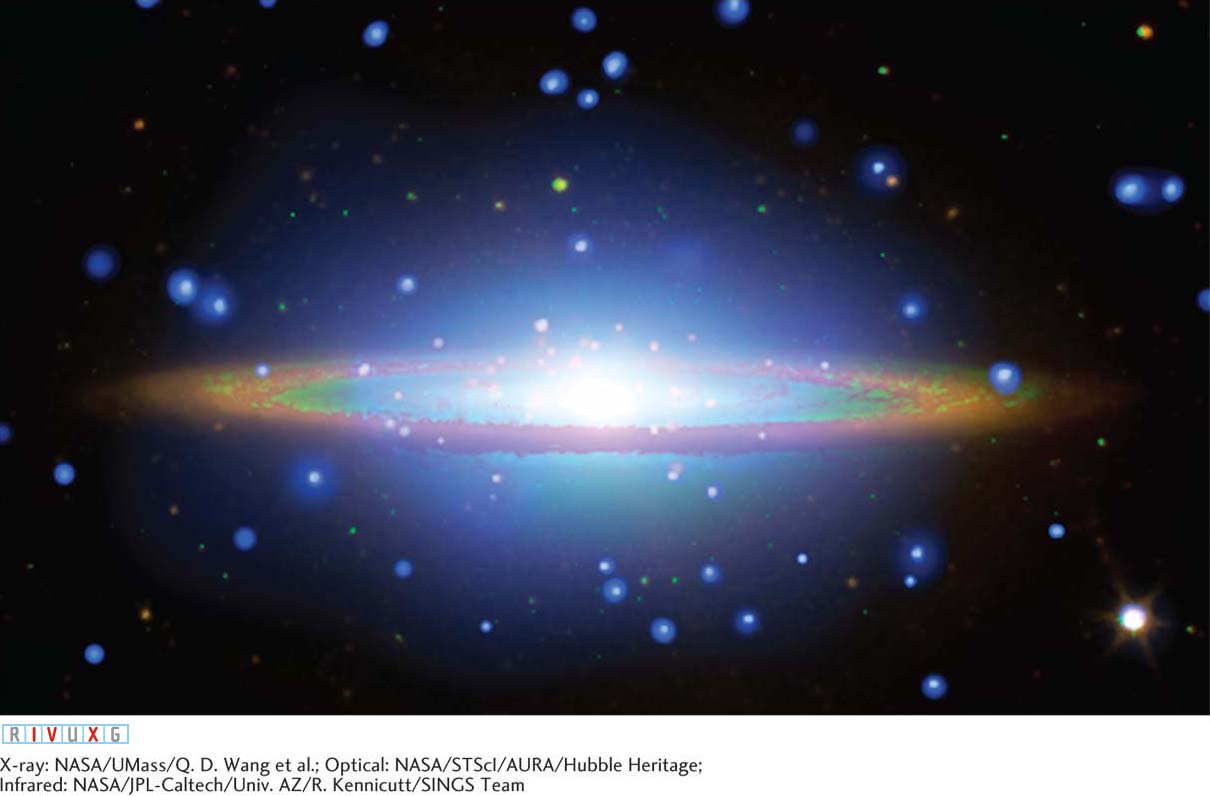Chapter Introduction
389

The Galaxies
WHAT DO YOU THINK?
 What is the shape of the Milky Way Galaxy?
What is the shape of the Milky Way Galaxy? Where is our solar system located in the Milky Way Galaxy?
Where is our solar system located in the Milky Way Galaxy? Is the Sun moving through the Milky Way Galaxy and, if so, about how fast?
Is the Sun moving through the Milky Way Galaxy and, if so, about how fast? Are most of the stars in spiral galaxies located in their spiral arms?
Are most of the stars in spiral galaxies located in their spiral arms? Do all galaxies have spiral arms?
Do all galaxies have spiral arms? Are galaxies isolated objects?
Are galaxies isolated objects? Is the universe contracting, unchanging in size, or expanding?
Is the universe contracting, unchanging in size, or expanding? What does “quasar” stand for?
What does “quasar” stand for? What do quasars look like?
What do quasars look like? Where do quasars get their energy?
Where do quasars get their energy?
Answers to these questions appear in the text beside the corresponding numbers in the margins and at the end of the chapter.
390
Centuries of observations have firmly established that our solar system is part of an enormous assemblage of hundreds of billions of stars, along with gas, dust, and other matter, all held together by their mutual gravitational attraction. This is our Milky Way Galaxy. Most of the stars in our Galaxy are located in a disk that looks from the edge like a flying saucer in an old science fiction movie (Figure 13-1a). Spiral arms swirl out from the ends of the bar and, within these arms, new stars form from the debris of earlier generations of stars. The Galaxy’s remaining stars are located in a two-

After considering our Galaxy, we explore the other types of galaxies, the groupings of galaxies called clusters and superclusters of galaxies, and the nature of the space that connects them. We end this chapter by examining the supermassive black holes that lie at the centers of most galaxies, and the effects these black holes have on the surrounding matter.
In this chapter you will discover
the Milky Way Galaxy—
billions of stars along with stellar remnants, gas, dust, and dark matter that are all bound together by their mutual gravitational attraction the structure of our Milky Way Galaxy and Earth’s location in it
that there is a supermassive black hole at the center of our Galaxy
how galaxies are categorized by their shapes
that galaxies are found in clusters that contain huge amounts of dark matter and why clusters of galaxies form in superclusters
how some galaxies merge and others devour their neighbors
that the universe is changing size
bright and unusual objects called active galaxies and distant, luminous quasars
supermassive black holes that serve as central engines for radio galaxies, quasars, Seyfert galaxies, and the extremely powerful BL Lac objects
391
 The Sombrero Galaxy (also designated M104, the 104th galaxy listed in the Messier catalog) is 29 million ly from us. By combining infrared, optical, and
The Sombrero Galaxy (also designated M104, the 104th galaxy listed in the Messier catalog) is 29 million ly from us. By combining infrared, optical, and